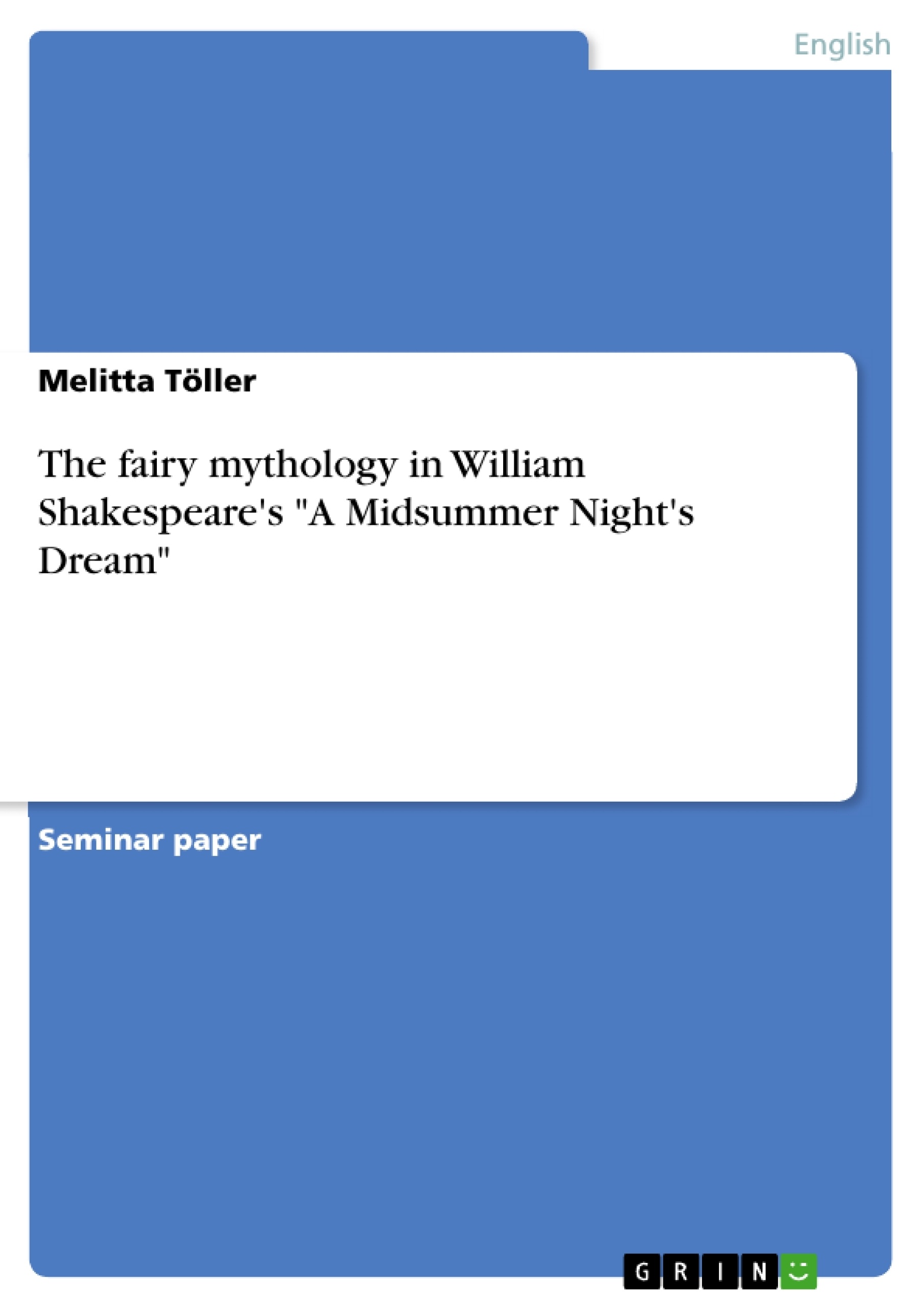"A Midsummer Night’s Dream" is Shakespeare’s most enchanting comedy and one of his most popular plays. It is very lyrical and poetic, filled with magical beings from mythological worlds and the power of true love.
Shakespeare’s age was the great time of fairy poetry in English literature, but no other work has influenced our visions of fairies as much as "A Midsummer Night’s Dream". Till today the idea of fairies, as we have them in our mind, is shaped by Shakespeare’s delighting comedy.
The play can be interpreted as “a fantasia on love” , because love, it’s follies, absurdities, conflicts and even dangers draw a red line through the play: from the quarrel between the fairy king and queen, to the heroic love of Theseus for his war-conquered Amazon queen, to the love-chase of Hermia, Helena, Lysander and Demetrius, and to the enchanted experiences of Bot-tom. In nearly all of these love affairs the fairies have their (sometimes helping) hand engaged and they are thus very important agents in the main- and in the sub-plots.
In this paper I will first take a survey of the historic belief in fairies in Shakespearian England, and then look at Shakespeare’s literary sources for the most important and most famous fairies who appear in this play, namely Oberon, Titania and Puck. Then I will show some parallels between the fairy queen Titania and Queen Elizabeth I, and afterwards I will analyze the quarrel between Oberon, king of fairies, and his wife. Finally I will give a comprehensive overview of the various ways of performing the play, both in theatre and in film.
Table of Contents
- Introduction.
- The Shakespearian belief in fairies.
- The sources of Shakespeare's fairies
- Puck.....
- Oberon .......
- Titania..........\li>
- Queen Elizabeth I - The \"fairy queen“.
- Oberon's and Titania's quarrel........
- Bad weather and dearth
- Bottom's metamorphosis.......
- \"Love-in-idleness\"
- The fairy world \"on stage\".
- Conclusion.......
Objectives and Key Themes
This paper aims to examine the fairy mythology in William Shakespeare’s A Midsummer Night’s Dream by exploring the historical context of fairy belief in Shakespearian England, analyzing the play’s literary sources for the fairy characters, and examining the relationship between Queen Elizabeth I and the fairy queen Titania. The paper also explores the significance of Oberon and Titania's quarrel and its connection to the play's themes of love, transformation, and the power of nature. The paper concludes with an overview of various stage and film interpretations of the play.
- The historical and cultural context of fairy belief in Shakespearian England
- Literary sources for Shakespeare’s portrayal of fairies, particularly Oberon, Titania, and Puck
- The relationship between Queen Elizabeth I and the fairy queen Titania
- The significance of Oberon and Titania's quarrel and its impact on the play's themes
- The various stage and film adaptations of A Midsummer Night’s Dream
Chapter Summaries
- Introduction: The introduction provides an overview of A Midsummer Night’s Dream, highlighting its enchanting nature, lyrical poetry, and enduring influence on our understanding of fairies. It introduces the play’s central themes of love and the complexities of human relationships.
- The Shakespearian belief in fairies: This chapter explores the prevalence of belief in magic and the supernatural during the sixteenth century, particularly in the context of the Protestant Reformation. It discusses the evolving understanding of fairies, contrasting the medieval Catholic perspective with the changing views during the Reformation.
- The sources of Shakespeare's fairies: This chapter delves into the literary and cultural sources that inspired Shakespeare’s portrayal of fairies. It explores the influence of Homer’s Iliad, Ovid’s Metamorphoses, and Thomas Mouffet’s poem Of the Silkworms, highlighting how these works contribute to Shakespeare's unique portrayal of fairies.
- Queen Elizabeth I - The “fairy queen”: This chapter examines the potential parallels between Queen Elizabeth I and Titania, the fairy queen in A Midsummer Night’s Dream. It explores the historical context of Elizabeth's reign and how her image as a powerful and benevolent ruler may have influenced Shakespeare's depiction of Titania.
- Oberon's and Titania's quarrel: This chapter analyzes the central conflict between Oberon and Titania, examining the reasons behind their quarrel and its impact on the play’s events. It explores the themes of love, jealousy, and power dynamics that underpin this conflict.
Keywords
This paper focuses on the fairy mythology in William Shakespeare's A Midsummer Night's Dream, examining the historical context of fairy belief in Shakespearian England, the play's literary sources, and the relationship between Queen Elizabeth I and the fairy queen Titania. Key themes and concepts include fairies, magic, the supernatural, the Protestant Reformation, Elizabethan England, Oberon, Titania, Puck, love, transformation, nature, and stage and film adaptations.
- Quote paper
- M.A. Melitta Töller (Author), 2004, The fairy mythology in William Shakespeare's "A Midsummer Night's Dream", Munich, GRIN Verlag, https://www.grin.com/document/88026




